Ultimate Guide to Seville
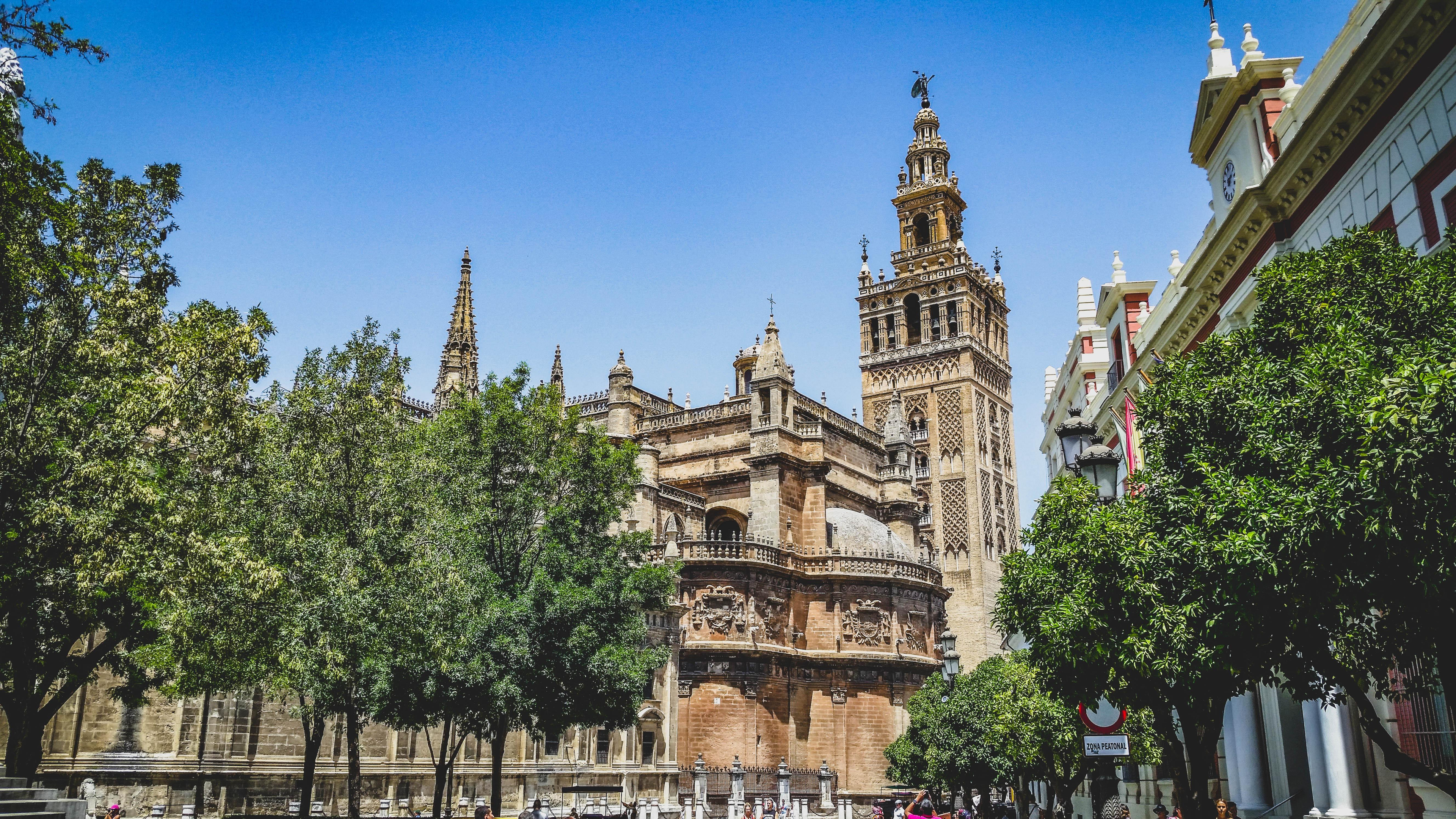
Background
Sevilla is one of the oldest cities in Europe. There have been settlements dating back to the Stone Age in the region, and the first recorded name of the city is "Isbaal" as given to it by the Phoenicians when they colonized a people group known as the Tartessos who were an indigenous Iberian people group around the 8th century BCE. The Romans came in and named the town Hispal and later Hispalis, After the Muslim conquest of the city in the 8th century CE, it was called Ishbiliyah. It was then "re-conquered" as part of the Reconquista in 1248 CE when it was given the Spanish name of Sevilla, anglicized with the French name of Seville.
The locals, called "sevillanos", are incredibly proud of their city and their heritage and won't let you ignore it. After all, two Roman emperors were born in the settlement just outside the city called Itálica: Trajan and Hadrian (the same one who had the wall dividing what are now known as Scotland and England).
When you visit, you'll be visiting a city thousands of years old!
When to Visit
🌞 While Sevilla is a beautiful city year-round, the best times to visit are between February and April and October through November when the weather isn´t too cold or too hot. Granted, December in Sevilla sees temperatures in the mid-to-high-60s Fahrenheit, but it can get very rainy and quite cold at night. Between May and September it's quite common for temperatures to be in the high-90s and low-100s the entire period, with relatively warm to cool nights. Given that Sevilla has a very dry climate except in the winter months, this explains the drastic change in temperatures. If you're not a fan of hot, dry weather, definitely avoid the summer months. It's also important to note that during Holy Week and the Feria de Abril the population often triples and hotels are booked out months to years in advance, so be aware of this as well.
My suggestions? Go in March or October when the weather is beautiful but the city is not as crowded and the heat isn't overpowering. I also particularly enjoy Christmas time as the rain adds a unique perspective to the city if you get it, and the weather is still quite comfortable and you generally only need a light jacket! And maybe an umbrella...
Culture
Looking to participate and the beauty and culture that Sevilla has to offer? Here are the best places to experience art and architecture of Sevilla in its fullest potential.
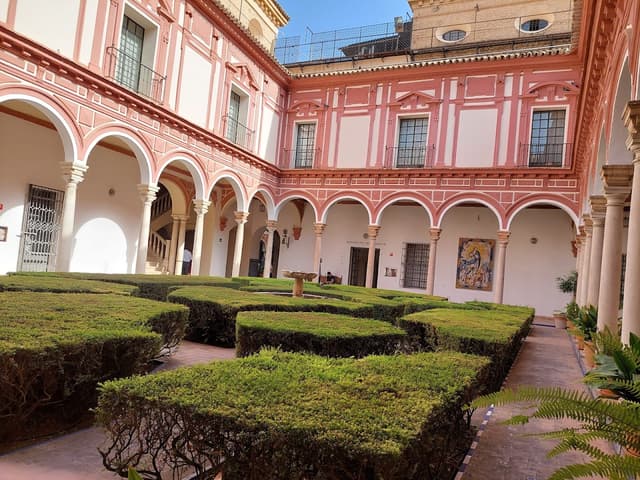
🥘 This is the predominant art museum in Sevilla, featuring art by renowned classical Spanish artists such as Murillo, Zurbarán, Francisco de Herrera the younger, and Valdés Leal. The building dates from the 16th century and is a former convent, becoming a museum in the 19th century.
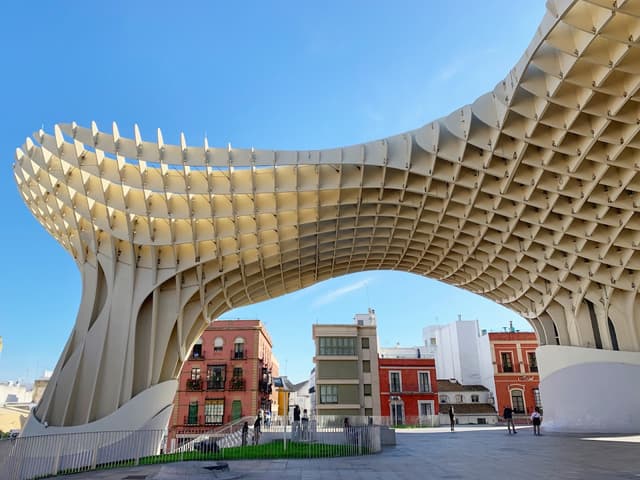
🥘 Probably the most famous monument in Sevilla next to the Giralda and the Plaza de España, it's the largest wooden construction in the world. The official name is actually "Metropol Parasol", but is called "Las Setas" after the mushroom formation it resembles ("seta" meaning "mushroom" in Spanish).
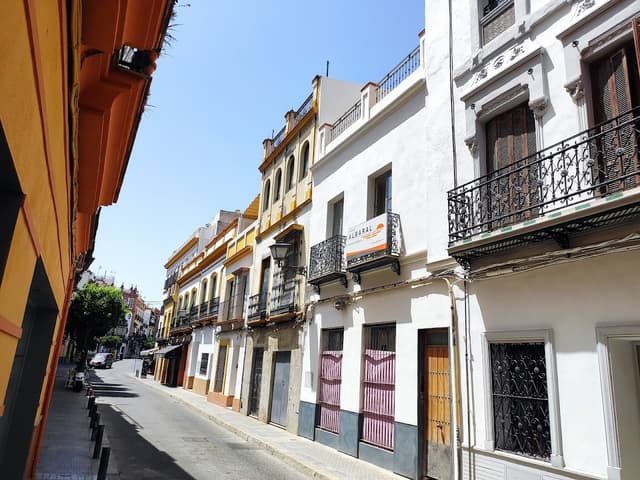
🥘 This is one of the most important neighborhoods in the city aside from the historic center, as it's renowned for its Roma culture where you can experience Flamenco at its finest and most authentic in the city in many of the bars dotting the neighborhood.

🥘 Located in the Santa Cruz district, which was the old Jewish Quarter, this church used to be a synagogue; Muslim Spain was famously tolerant (though high taxes were demanded of people of non-Islamic faith). When Sevilla fell to the Castillian Christians in 1248, all the mosques in predominantly Jewish neighborhoods were converted to synagogues, and this was one of those buildings. No remains of the original mosque or subsequent synagogue survive, as during anti-semitic riots in 1391 it was forcibly converted into a church and destroyed. The current building is from the 17th century.
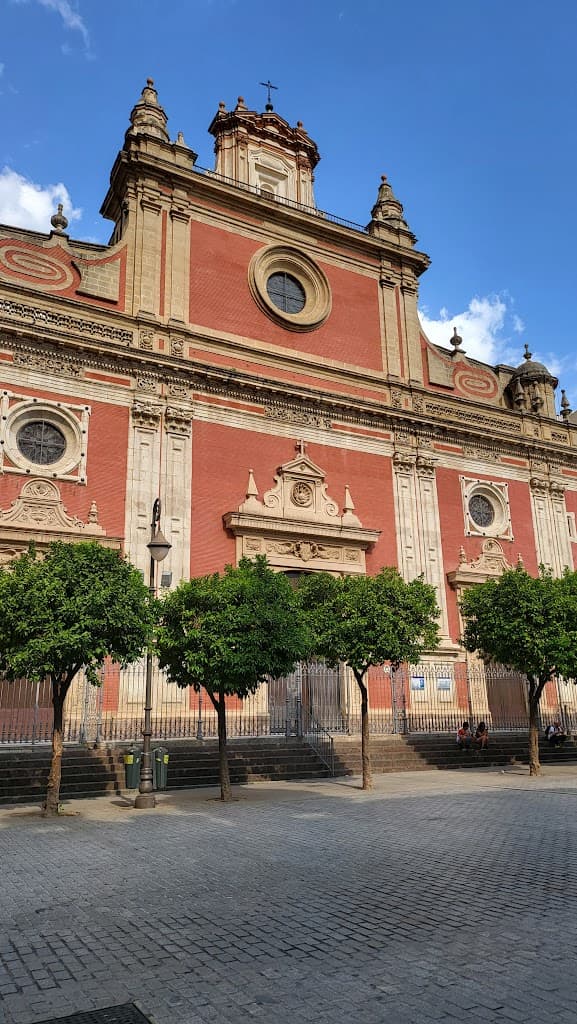
🥘 This church was originally founded in 1248 after the Muslims were expelled from the city on the oldest mosque, dating from the 9th century. After years of neglect, most of the original structure was renovated in the 18th century in the Baroque style. Hence the ornate, gilded altarpiece.
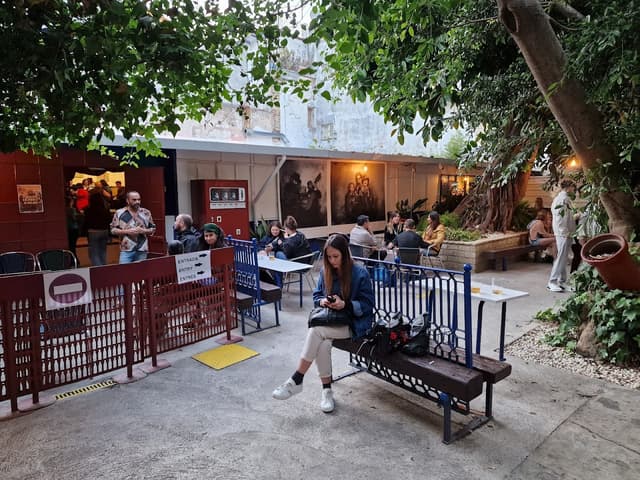
🥘 This bar/restaurant is consistently ranked one of the best places to see a flamenco show in the city. Instead of a theatre performance, you pay for your drinks and food, and the flamenco itself is included in the cost! It´s a bit touristy, but it's a much better place to see a more authentic version of flamenco than in a tablao (which should be generally avoided since while the performers are still incredibly thrilled, the shows themselves are geared towards tourists and the overall experience isn't always the best).
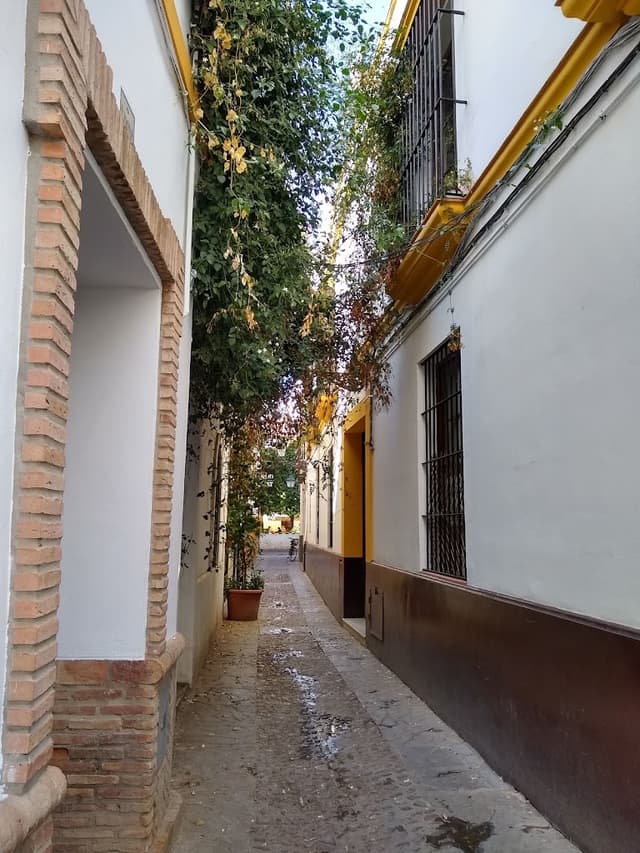
🥘 The old Jewish quarter, this neighborhood is known for narrow, winding streets and picturesque alleyways. It's full of restaurants, souvenir shops with local artisanal crafts and orange trees lining the streets. It's one of the most important and famous neighborhoods in the city and features the Cathedral with the Giralda belltower.
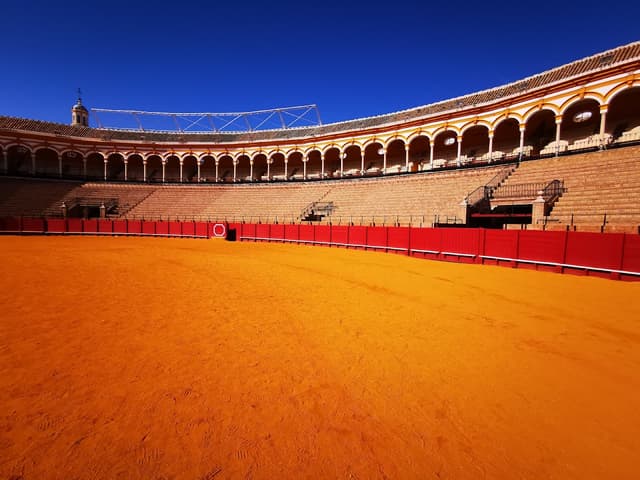
🥘Bullfighting is an extremely controversial pastime in Spain (around 70% of Spaniards do not support the practice), it's still a cultural monument for many Spaniards, especially in Andalucía, and Sevilla most of all. This is one of the most important bullrings in the country, and even if you don't go to a bullfight itself (which I personally don't recommend you do), there's a wonderful museum displaying the history and culture of the event itself.
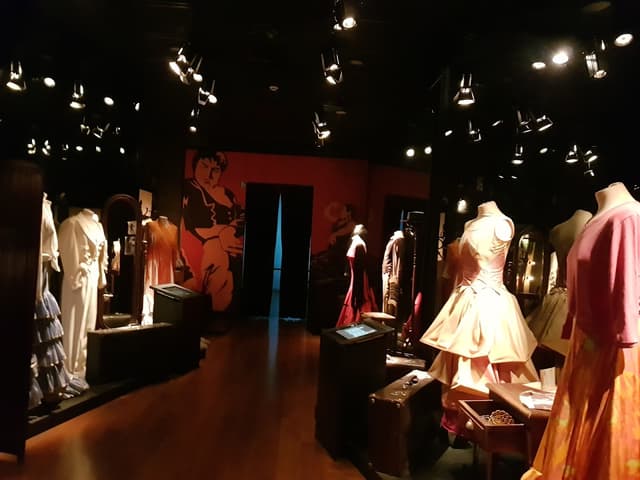
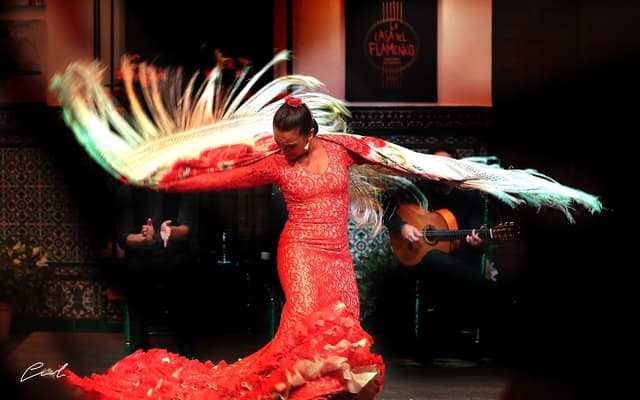
History
Ready to take a dive into Sevilla's rich history? Look no further than this list of places that will truly help you appreciate how rich this city is!
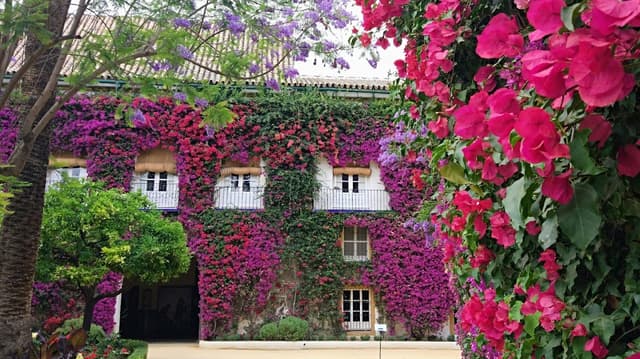
⛲ Located a few blocks from the Setas, this is the ancestral home of the Alba family, so powerful in Spanish history they were considered to have more power than the Royal Family, and the family itself has more titles than the King himself. When the Duchess Cayetana, the most titled person in the world before she passed in 2014, the decision was made to open the house to the public, which it did in 2016. The Spanish poet Antonio Machado was born in the complex in 1825.

⛲ This is the home of the Lebrija family, an important name in Seville (and Spain as a whole given their influence throughout much of its history), converted into a museum. Original construction began in the 18th century and the building houses a vast collection of art ranging from European masters to Asian art, as well as mosaics and tilework collected from ancient Roman ruins.
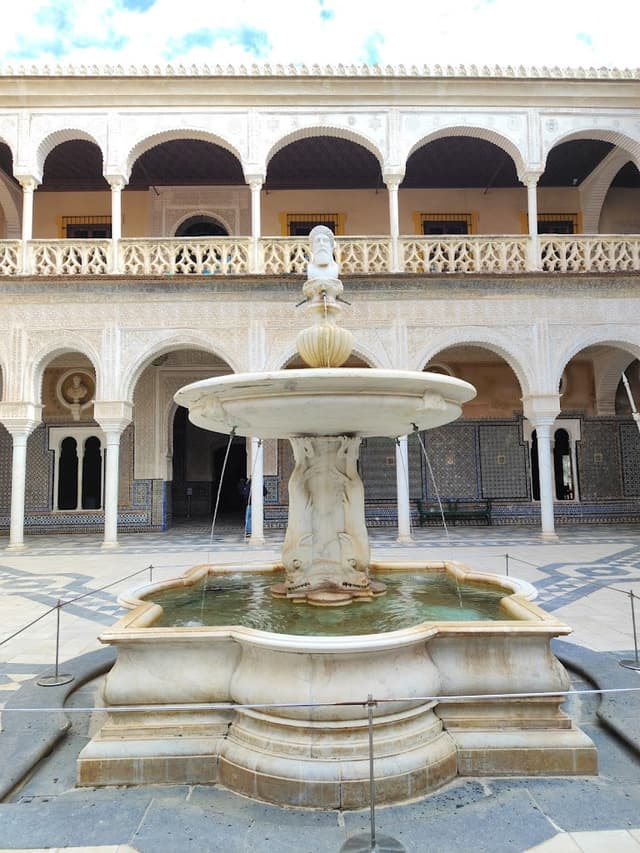
⛲ Another palace turned museum, this is the ancestral home of the Duke of Medinaceli, another major European family. It has the one of the largest collections of Spanish tile, "azulejos", in the world. It has been featured in a few major Hollywood films, such as "Lawrence of Arabia" (most of the Cairo scenes in the film were actually filmed in Sevilla).
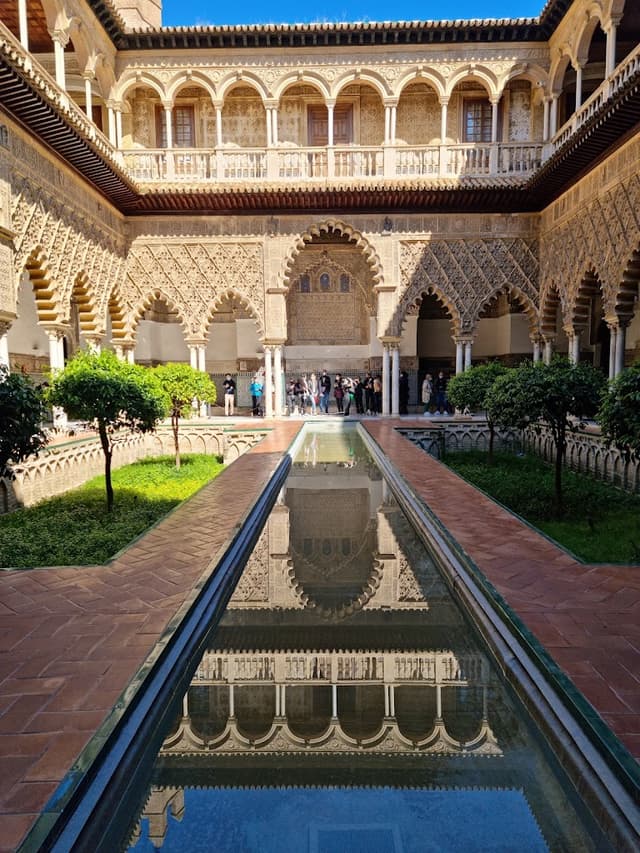
⛲ The former palace during Islamic rule in Sevilla, this site has been developed since the Roman period, and is where the Spanish royal family stays on visits to the Andalusian capital. It's been added on to so many times that each cultural influence has evidence in the architecture, from Roman, to Visigothic, to Islamic, to Christian Mudéjar (Arab Christian), to Gothic. As with many other historic monuments in the city, it's been featured in multiple Hollywood films and TV shows such as "Lawrence of Arabia", "Kingdom of Heaven", and the 5th and 6th seasons of "Game of Thrones".
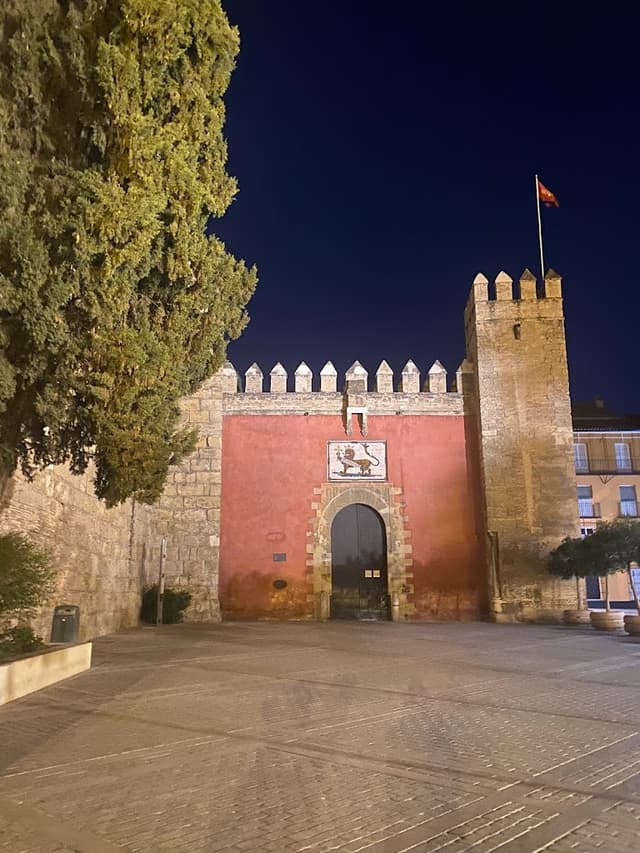
⛲ One of the main entryways to the Alcázar, it's located near the Cathedral in the Santa Cruz district though the ticketed entrance is on the other side of the complex.
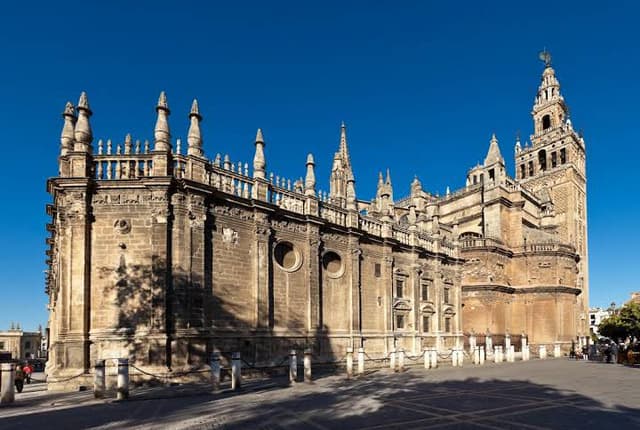
⛲ One of the largest churches in the world and the largest Gothic cathedral, it was built on top of one of the main mosques and incorporated the old minaret into a belltower, known as the Giralda. Climb up the ramp which used to be for a horse and rider could go to the top, both for the muezzin to sing out the call to prayer during the Islamic period, as well as to ring the bells after the Reconquista. There's an extensive collection of art in the museum, and a massive gilded altarpiece that's one of the oldest and biggest of its kind in the world.
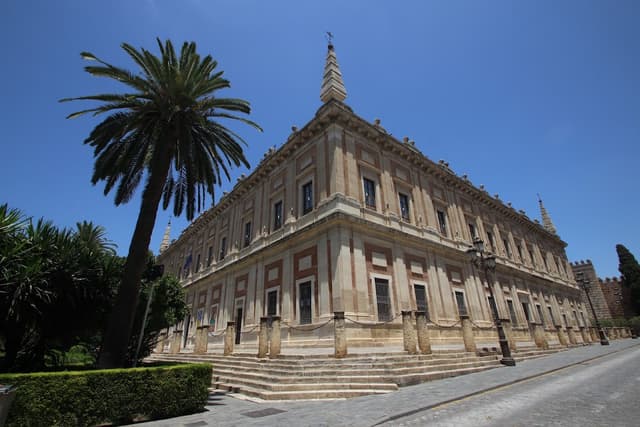
⛲ This building constructed in the 16th century houses miles upon miles of historical documentation and books pertaining to the colonization of the Americas, the Indies. The vast majority of the archives can be consulted online, but the building itself is worth the visit due to the historical context and the gardens just outside near the Reales Alcázares.
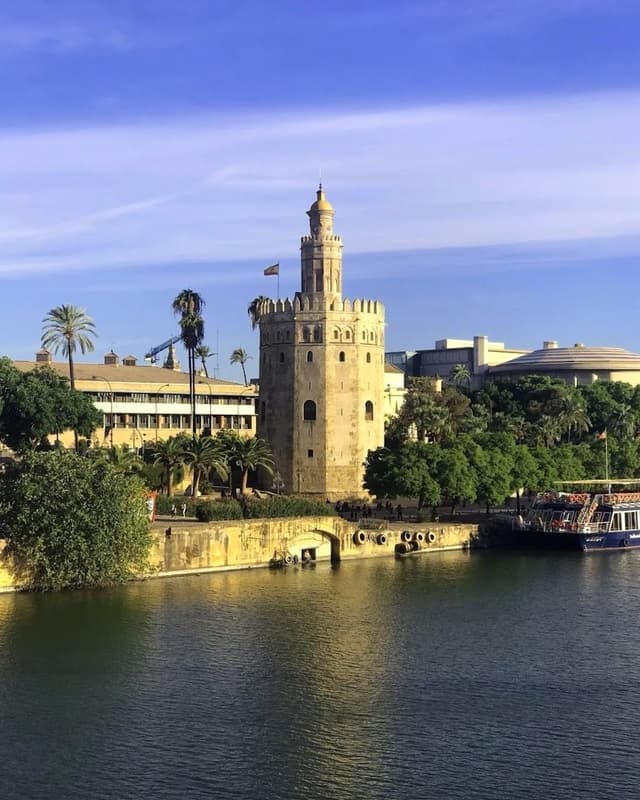
⛲ Constructed as a military watchtower, rumor has it the gold brought back from the Americas was stored here, but the name actually comes from the gold hue reflected on the Guadalquivir river. It was partially destroyed during the earthquake in Lisbon in 1755 (Lisbon and Sevilla are only a few hundred km away) and the locals petitioned to the King of Spain to have it rebuilt instead of destroyed.
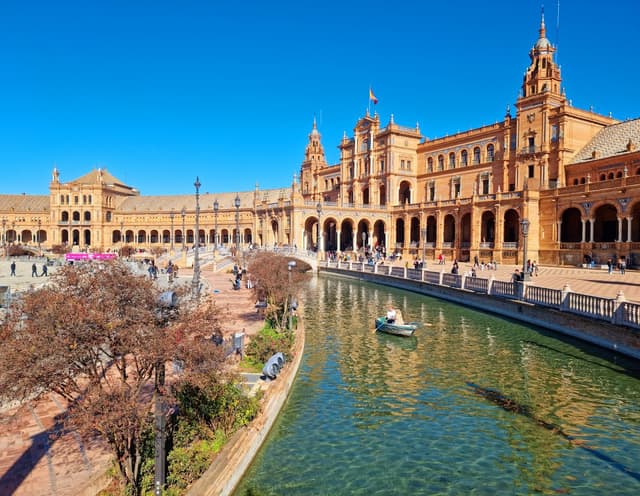
⛲ By far one of the most famous and iconic monuments in the entire city, it was built for the 1929 Ibero-American Exhibition and along the colonnade you'll find stations featuring each province in Peninsular Spain. It's been featured in "Lawrence of Arabia" and "Star Wars: Attack of the Clones" and there's reason why you'll often find bridal and wedding photos taken here!
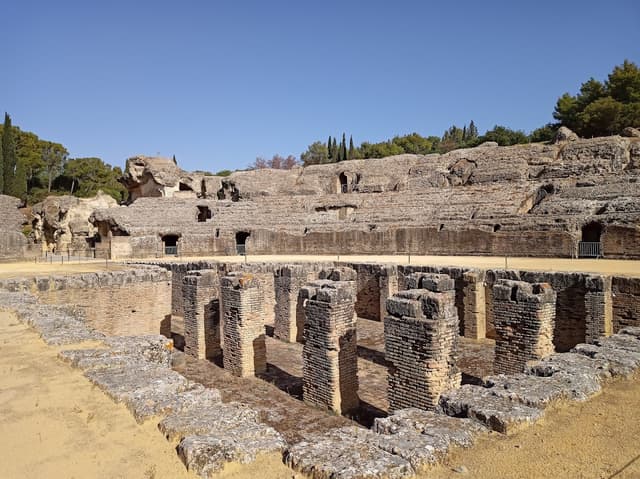
⛲ This ancient Roman city is located just outside Sevilla in the town of Santiponce, and while civilizations had been in the area before it became a Roman city in its own right during the Republican period, under the Empire it became even more important. It was the first Roman city founded as part of the empire in the Roman province of Hispania as well as outside of the Italian peninsula. It reached its zenith during the 1st and 2nd centuries during the reigns of the emperors Trajan and Hadrian, both born in the city. It already had a level of prestige, but the fact that it birthed two major emperors important to the expansion of the Empire led to its importance.
Definitely check out the amphitheatre as well as the Theatre a few blocks away, with the Spanish town of Santiponce sitting right in the middle.
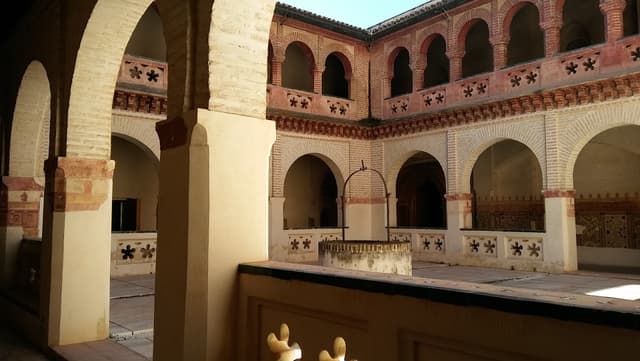
⛲ Located in the same town as the Roman ruins of Itálica, this monastery, built in 1301, was crucial to the Reformation movement in Spain as many books that had been banned by the Inquisition were kept and read, and the Bible was also translated into the vernacular Spanish in 1569 by the monk Casiodoro de Reina with revisions done by Cipriano de Valera in 1602. This translation of the Bible, using more modern language in subsequent years, is still in use in Spain today.
The monastery itself went through an extensive renovation in 2002 and is considered a historical monument by the Junta de Andalucía.
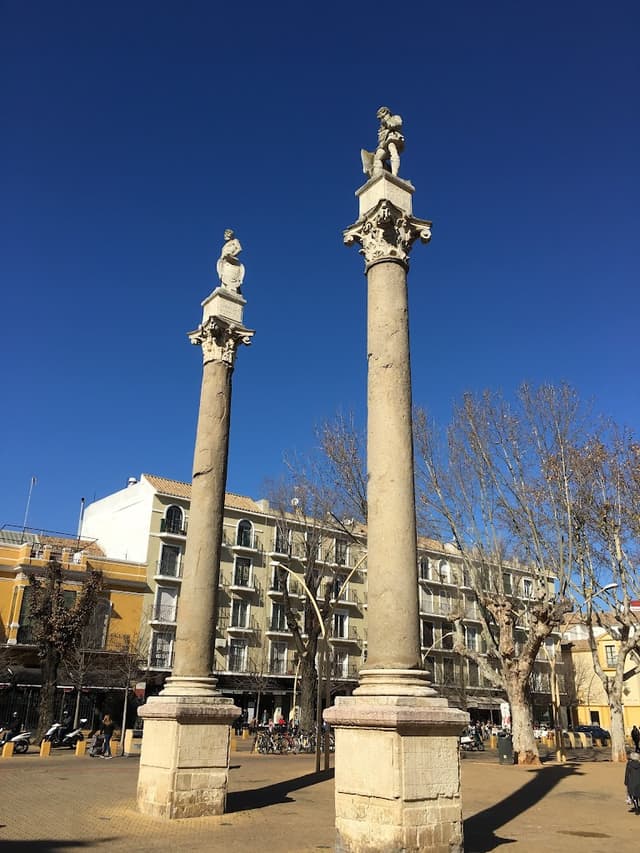
⛲ Legend has it Sevilla was founded by Hercules, and this promenade pays homage to this story. It's a garden square with lines of poplars ("álamos"), it's the oldest of its kind in Europe.
Leisure
Need a break from the culture and history? Check out these places where you can spend some time just participating in activities with the locals. (Yes, like shopping and eating!)

🥘 The main street in the primary shopping district in the city. Only a few blocks from the Cathedral, there are tons of souvenir shops aside from internationally-known stores such as Zara, Mango, and H&M.
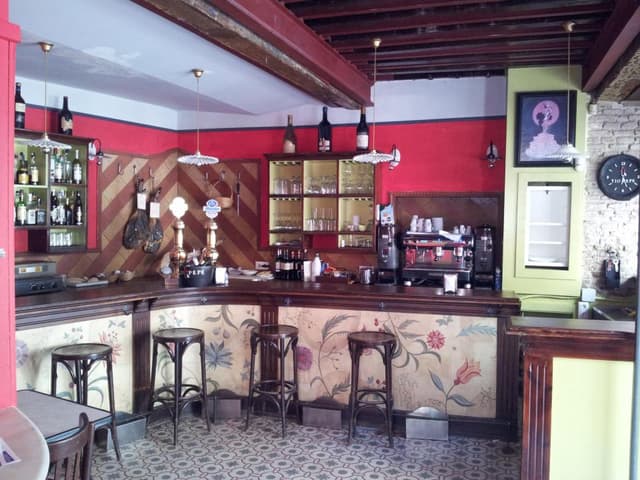
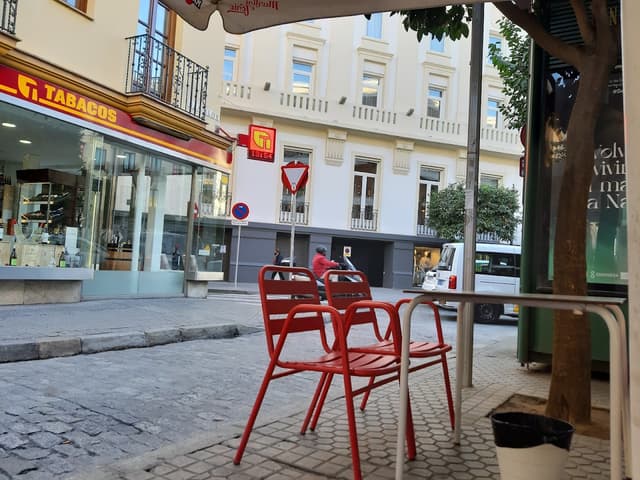
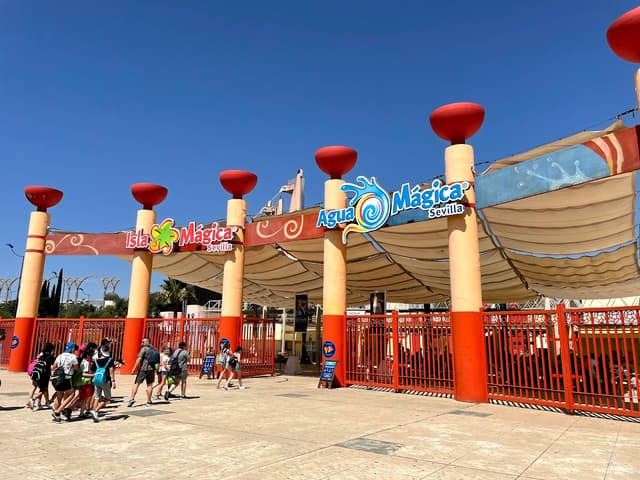
🥘 This amusement park was built for the 1992 Expo and is a great place to pass the time, whether you have kids or just enjoy amusement parks! It's relatively small, but perfect when the weather is warm and you want to relax and have some fun.
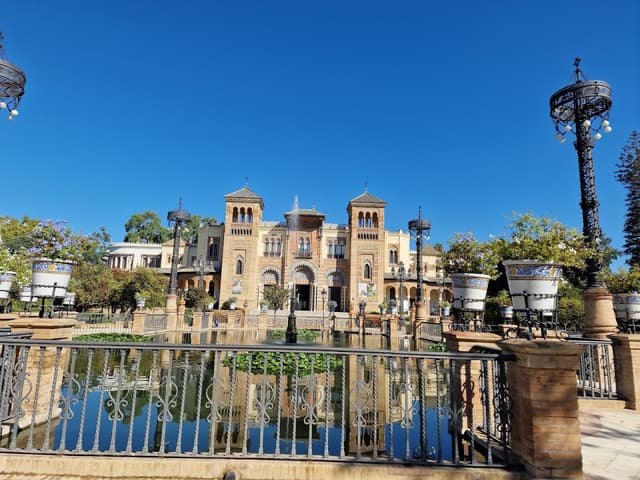
🥘 Surrounding the Plaza de España is this massive public garden full of palm trees, fountains, pathways, and all kinds of flora to explore! It's a perfect place to spend an hour or five, incredibly relaxing, incredibly beautiful.
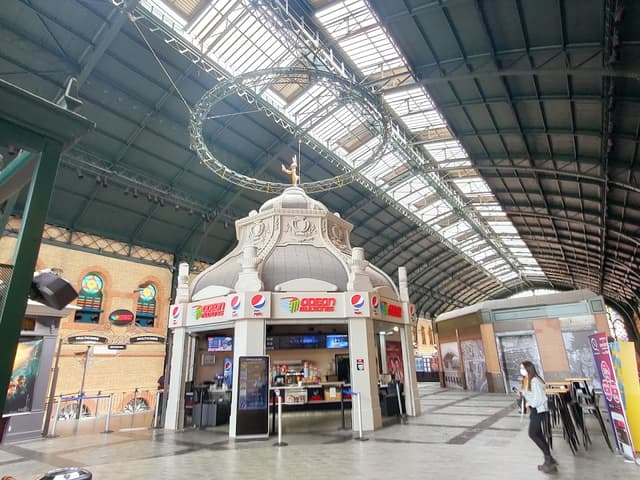
🥘 This shopping mall is right across the street from the bus station that can take you outside the city to smaller towns that surround Sevilla as well as other locations within the city. It used to be the primary train station in the city before Santa Justa, and has absolutely stunning Moorish/North African-inspired architecture from the Art Nouveau period. If you've ever seen the movie "Flamenco" by Spanish documentarian Carlos Saura, many of the performances were filmed here before it was converted to a shopping center.
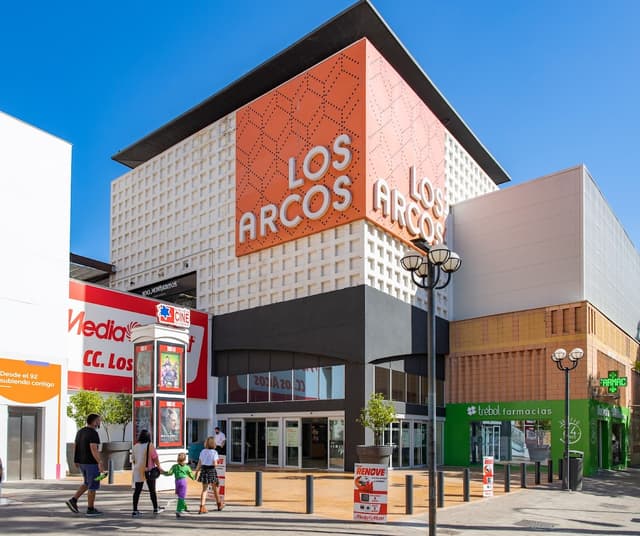
🥘 A major shopping center located a few blocks from the Santa Justa train station, it's great place to hang out, shop, eat, and get some AC if you happened to visit the city during the height of summer.
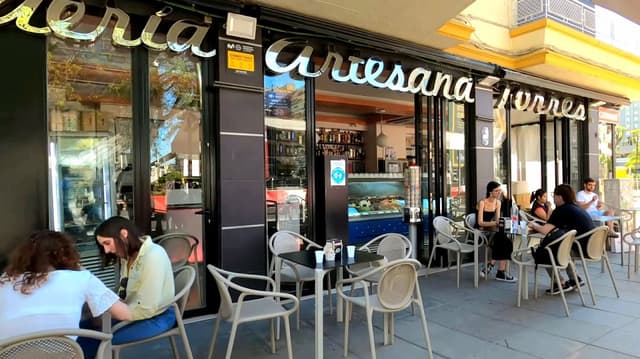
🥘 Another major shopping center located next to the Sánchez Pizjuán soccer stadium, it's great for shopping and eating as well as getting some indoor walking in the AC if you're in the area and need to cool off during a hot day.
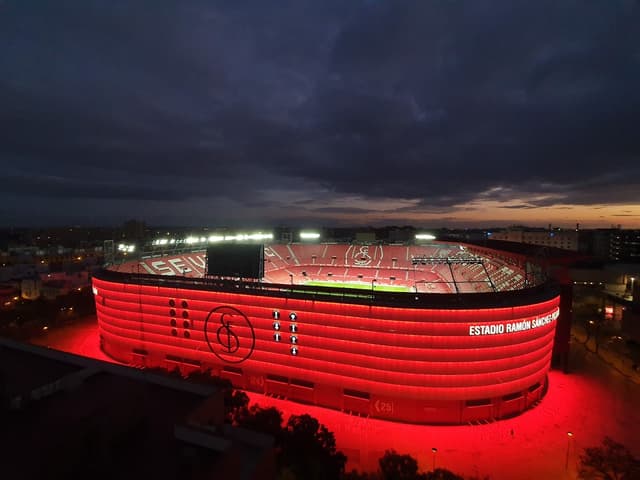
🥘 For soccer fans, definitely check out the recently renovated home of Sevilla FC, 2023 winners of the Europa League championship. Whether you're in town for Match Day or not, check out the museum which has the history of the club on full display.
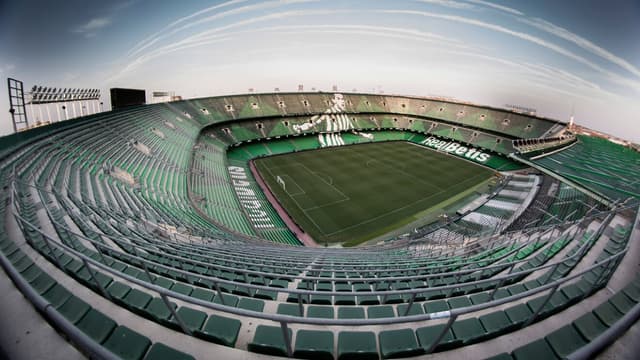
🥘 Just in case you're a fan of Sevilla's other soccer club Real Club de Betis Balompié, this is your home! The two soccer clubs are in constant rivalry with each other, so regardless of which stadium you choose to visit (or if you choose to visit both!), be careful which locals you tell this to, especially if you manage to find your way into a local bar that supports one club over the other (Sevilla's colors are white and red, Betis's are green and white, so these colors will let you know which bar supports which club)!
Need More?
If you're doing more travel around Spain, check out some of my other guides to help you along the way!
The home for unique & authentic travel

